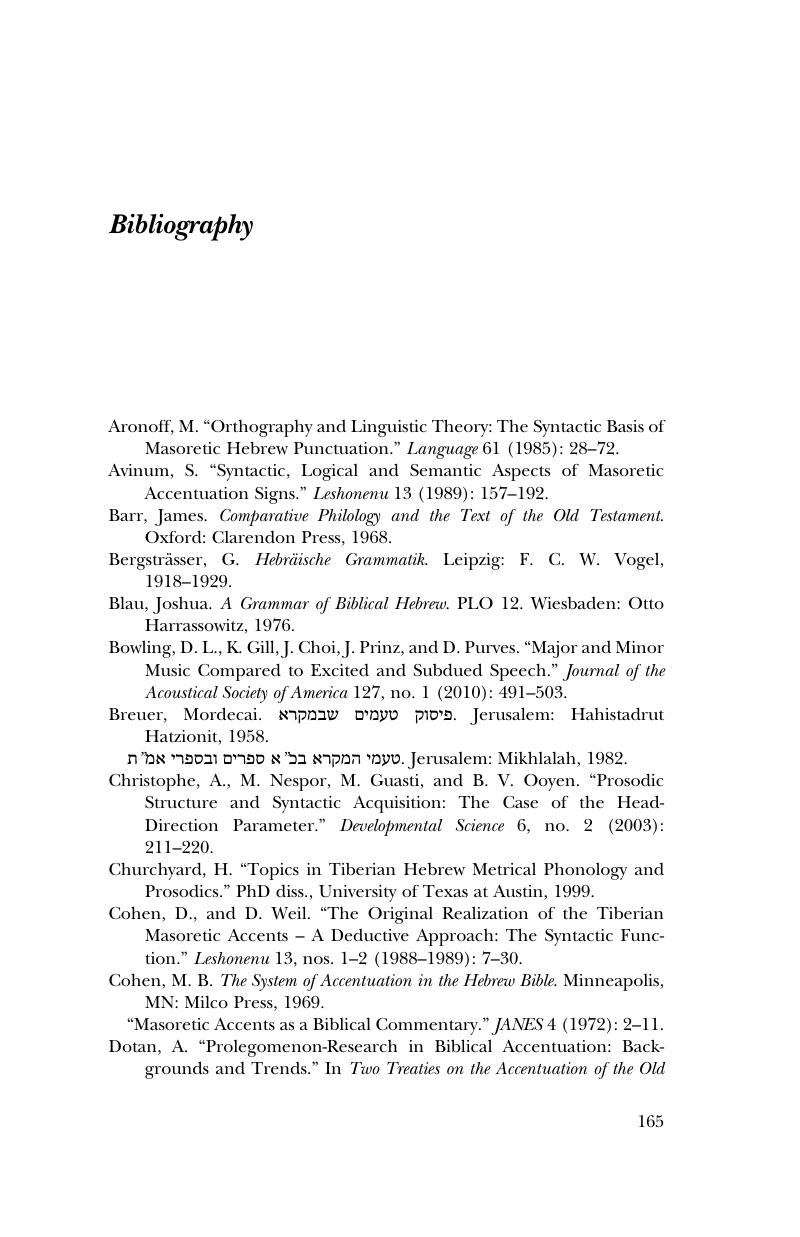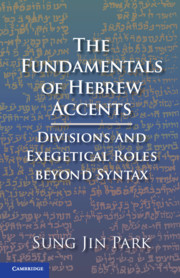Book contents
- The Fundamentals of Hebrew Accents
- The Fundamentals of Hebrew Accents
- Copyright page
- Dedication
- Contents
- Tables
- Preface
- Abbreviations
- 1 Introduction to Tiberian Hebrew Accents
- 2 Major Rules of Hebrew Accents
- 3 Substitutions of Disjunctive Accents (I)
- 4 Substitutions of Disjunctive Accents (II)
- 5 Conjunctive Accents
- 6 Minor Rules of Hebrew Accents
- 7 The Divisions by Hebrew Accents
- 8 The Exegetical Roles of the Divisions
- Book part
- Bibliography
- Subject Index
- Scripture Index
- References
Bibliography
Published online by Cambridge University Press: 27 June 2020
- The Fundamentals of Hebrew Accents
- The Fundamentals of Hebrew Accents
- Copyright page
- Dedication
- Contents
- Tables
- Preface
- Abbreviations
- 1 Introduction to Tiberian Hebrew Accents
- 2 Major Rules of Hebrew Accents
- 3 Substitutions of Disjunctive Accents (I)
- 4 Substitutions of Disjunctive Accents (II)
- 5 Conjunctive Accents
- 6 Minor Rules of Hebrew Accents
- 7 The Divisions by Hebrew Accents
- 8 The Exegetical Roles of the Divisions
- Book part
- Bibliography
- Subject Index
- Scripture Index
- References
Summary

- Type
- Chapter
- Information
- The Fundamentals of Hebrew AccentsDivisions and Exegetical Roles beyond Syntax, pp. 165 - 170Publisher: Cambridge University PressPrint publication year: 2020




 .”
.”